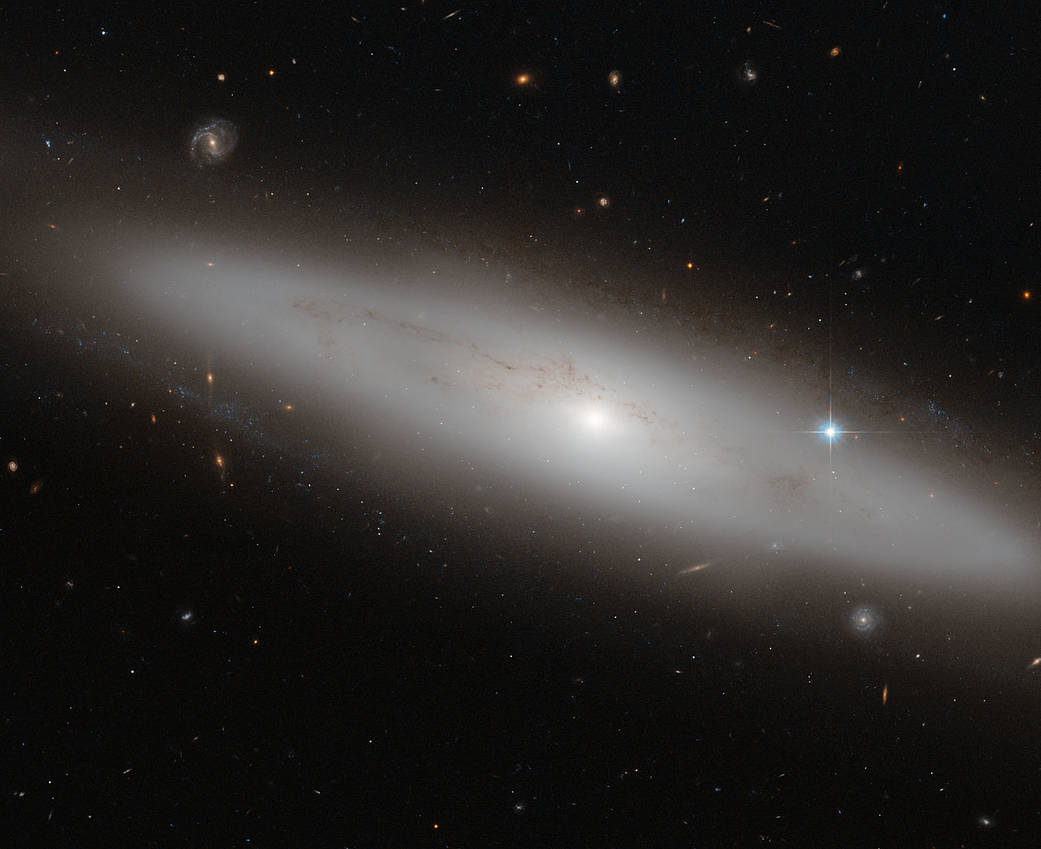This month’s media comes from Dr Stefania Barsanti from ANU, who discusses her recent paper on the relationship between colour and the number of new stars being made in large groups of galaxies. Stefania and her colleagues focus on one particular type of galaxy that is usually only found in these groups (or clusters) of galaxies, called a lenticular galaxy.
Galaxies can take a variety of shapes and sizes. The common image of a galaxy most people are familiar with is that of a spiral galaxy. A beautiful disk of light, with dust obscuring parts of it and, if seen from the right angle, beautiful spiralling arms that seem caught mid-swirl around a central bulge of light.

Spiral galaxy M81. Credit: NAOJ/Hubble/Roberto Colombari/Robert Gendler.
But not all galaxies look like this. Some are more like giant balls of light, with no distinguishing features (known as elliptical galaxies).

Elliptical galaxy M87. Credit: Robert Gendler.
Others are very small (for a galaxy) and look most like bright smudges (dwarf galaxies).

Dwarf galaxy IC 4710. Credit: ESA/Hubble.
Lenticular galaxies are partway between spiral and elliptical types, they have disk-shapes but are missing those spiral arms.

Lenticular galaxy NGC 4866. Credit: ESA.
The colour of the galaxies gives us information about the age and type of the stars that are in it. Red stars tend to live a long time, and therefore are often older, and galaxies that are redder don’t make many stars. Blue stars do not live very long, and are therefore young (for a star). Galaxies that look very blue are making lots of new stars. These colours can tell an astronomer a lot about a galaxy. Some galaxies can have different colours for different parts – eg. a blue disk and a red bulge, indicating that most of the new stars are being formed in the disk.
Previous observations suggest the environment around a galaxy, and how many nearby galaxies there are, can affect how many new stars are being formed. Stefania and her colleagues wanted to know if galaxies had to be inside a cluster of galaxies before their ability to make new stars was affected, or if it started as they began to fall into the cluster.
For this they used the SAMI galaxy clusters and looked at the colour of both the disks and bulges of a range of lenticular galaxies, and compared them to how close to the centre of the cluster the galaxy was.
Stenfania and her colleagues wanted to know what’s happening to galaxies as they fall into a cluster, going from being out on their own to being in a group.
As galaxies fall into the cluster their distance from the centre of the cluster gets smaller. The density of galaxies increases though, as there are simply more galaxies in the centre.

Colour versus the galaxy’s distance from the centre of the cluster. “Distance” here though isn’t a true distance, it’s relative and based on density. A “distance” of 1.0 is actually the distance at which the density of the cluster is a specific value, known as the “critical density”. A “distance” of 2.5 is the distance from the centre where the cluster has a density that’s equal to 40% of the critical density, and at a “distance” of 0.5 the density is twice that of the critical density.
The data used for the analysis showed that the bulges do not change colour with either distance from the centre of the cluster or density, whereas the disks get bluer the larger the distance from the centre of the cluster and the lower the density.
The physical interpretation of their results is that the environment around a galaxy affects the disks but not the bulges, since they did not see any change in the bulge colours with radius from the centre of the cluster or density of galaxies. Therefore, the environment in the core of the galaxy clusters play a greater role in the formation of S0 galaxies than the environment around the outside of the clusters. These environmental effects stop stars forming in the disks, making them redder.
So basically: lonely galaxies make more stars in their disks!
Leave A Comment